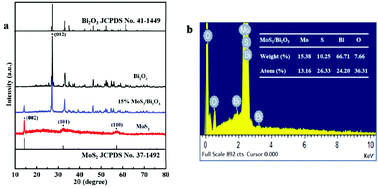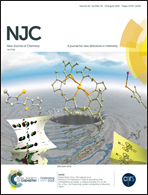Z-scheme MoS2/Bi2O3 heterojunctions: enhanced photocatalytic degradation performance and mechanistic insight†
Abstract
A new Z-scheme MoS2/Bi2O3 heterojunction photocatalyst was successfully prepared using a facile and practical hydrothermal method. The Z-scheme MoS2/Bi2O3 heterojunction exhibits a superior degradation efficiency compared to pure MoS2 and Bi2O3 for removing industrial and domestic pollutants under visible light, such as 2-mercaptobenzothiazole, tetracycline and rhodamine B. The enhancement in the photocatalytic performance mainly stems from the interfacial interaction between the MoS2 nanosheets and Bi2O3 rods, which can increase the specific surface area and accelerate the separation of the photo-induced electron–hole pairs. To explain this interfacial interaction between MoS2 and Bi2O3 in the Z-scheme MoS2/Bi2O3 heterojunction, several characterization techniques were applied. In addition, the photocatalytic mechanism for degrading pollutants was demonstrated using trapping experiments and electron spin resonance. This work could provide a promising approach for the formation of other Z-scheme transition metal compound heterojunctions with outstanding photocatalytic activity.



 Please wait while we load your content...
Please wait while we load your content...